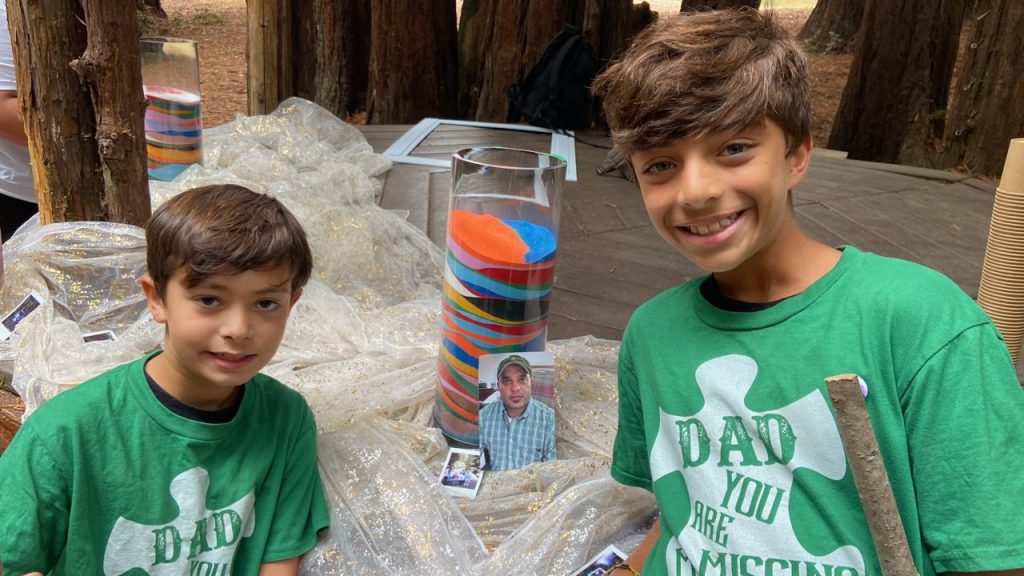Photo caption: Kim Kellogg volunteering at a Xenophon Therapeutic Riding Center in Orinda, Calif. with therapy horse, Ivy.
When Piedmont, Calif. resident Kim Kellogg, 75, was diagnosed with an early form of breast cancer in January, she was stunned. “The imaging revealed an incredibly small tumor, about the size of a pea,” she said. “Thanks to the skillful imaging team, they were able to detect it early. It felt like a miracle.” Kellogg underwent surgery followed by five radiation sessions at Sutter Health’s CPMC in San Francisco to treat ductal carcinoma in situ, or DCIS—a non-invasive form of cancer where abnormal cells are found in the milk ducts of the breast.

Kim and her husband Jim in Paris, France.
Kellogg’s diagnosis marked the beginning of a challenging journey—one made more manageable by the unwavering support of her care team. “Everyone, from the nurse navigator to the anesthesiologist, was supportive,” she said. “Their compassion, along with the advanced technology, helped me stay positive through a tough time.”
One surprising and helpful part of her treatment? Sutter’s use of tattoo-free radiation therapy, known as surface-guided radiation therapy (SGRT), which eliminates the need for permanent skin markings traditionally used to guide radiation. “I have friends who went through breast cancer years ago and still have those little black tattoos,” Kellogg said. “I’m grateful I don’t have that daily reminder.”
Precision Without the Ink
SGRT is an advanced form of external beam radiation that uses 3D imaging and real-time optical tracking to deliver highly precise treatment. Here’s how it differs from traditional radiation therapy:
- Real-time surface mapping: Cameras and specialized software create a 3D map of the patient’s body surface, allowing clinicians to monitor positioning continuously.
- No permanent tattoos: SGRT replaces traditional skin markings with surface imaging, aligning the patient accurately without physical markers.
- Pinpoint accuracy: Radiation is delivered exactly where it’s needed – down to the millimeter while minimizing exposure to surrounding healthy tissue.
- Motion management: SGRT tracks breathing and movement, pausing treatment if the patient shifts, which is especially important for breast cancer patients near the heart and lungs.
Dr. Roy Abendroth, radiation oncologist at CPMC, emphasized the significance of the innovation. “This represents a major advancement in cancer care,” he said. “By using SGRT, we’re able to deliver treatment with remarkable precision – without the need for permanent tattoos. Sutter is proud to lead in offering patients world-class care that’s both highly accurate and deeply compassionate.”
In addition to its clinical precision, SGRT offers a deeply personal benefit for breast cancer patients, helping preserve their sense of identity and dignity during treatment. Dr. Amanda Wheeler, breast surgeon and chair of Sutter’s Advanced Cancer Service Line, emphasized the importance of supporting patients’ physical and mental health during treatment. “Patients frequently share that they want to avoid permanent tattoos which can feel like a lasting reminder of their cancer diagnosis,” Dr. Wheeler said.
“For some, this concern has influenced their decision to pursue more aggressive surgery, like a mastectomy (surgical breast removal). Offering SGRT means we can support their emotional well-being and preserve their sense of self during treatment. It’s a small change with a profound and lasting impact.”
Personalized Cancer Care, Elevated by Technology
For patients like Kellogg, the benefits of SGRT go beyond appearance. Studies show that a large percentage of patients struggle with body image during breast cancer treatment, and about 25% experience depression – significantly higher than the general population.
“As my breast healed, I looked in the mirror and couldn’t even tell I’d had surgery,” Kellogg said, crediting Dr. Kjirsten Carlson Betz, surgical oncologist at CPMC, for the exceptional outcome. “Not having tattoos means I don’t carry a visible reminder of cancer. That’s powerful.”

Ximena (left) pictured with her family.
Another DCIS patient, Ximena Velez, 48, a nonprofit founder and mother of two from Marin, Calif., shared a similar experience. “I’ve always been active an healthy. I’d never had surgery or been seriously ill, so the diagnosis was a shock,” she said. After undergoing surgery to remove her tumor, Velez learned she would need 19 radiation sessions to help prevent recurrence. She too was relieved by the tattoo-free treatment. “You already have so much going on in your body,” she said. “It’s one less thing to worry about.”
Both women credit early detection and Sutter’s integrative, care team-based approach for their recovery. Kellogg now volunteers at a therapeutic riding center and travels frequently, while Velez continues to support young artists through her nonprofit. “This wasn’t something I ever imagined facing,” Velez said. “But I’m grateful for the technology and care that helped me through it.”
Their message to others? Prioritize screenings and advocate for yourself. “You never know who might be going through something similar,” Kellogg said. “Sharing our stories might help someone else take that first step.”
“Stories like Kim’s and Ximena’s remind us why innovation matters. SGRT delivers more than meets the eye,” Dr. Abendroth said. “While the technology ensures exceptional precision, it can also preserve dignity, reduce trauma and help patients move forward without permanent reminders of their diagnosis. We’re committed to delivering care that’s both technologically advanced and deeply human.”
For more information about Sutter’s Advanced Cancer Service Line, including SGRT, visit https://sutterhealth.org/services/cancer.





